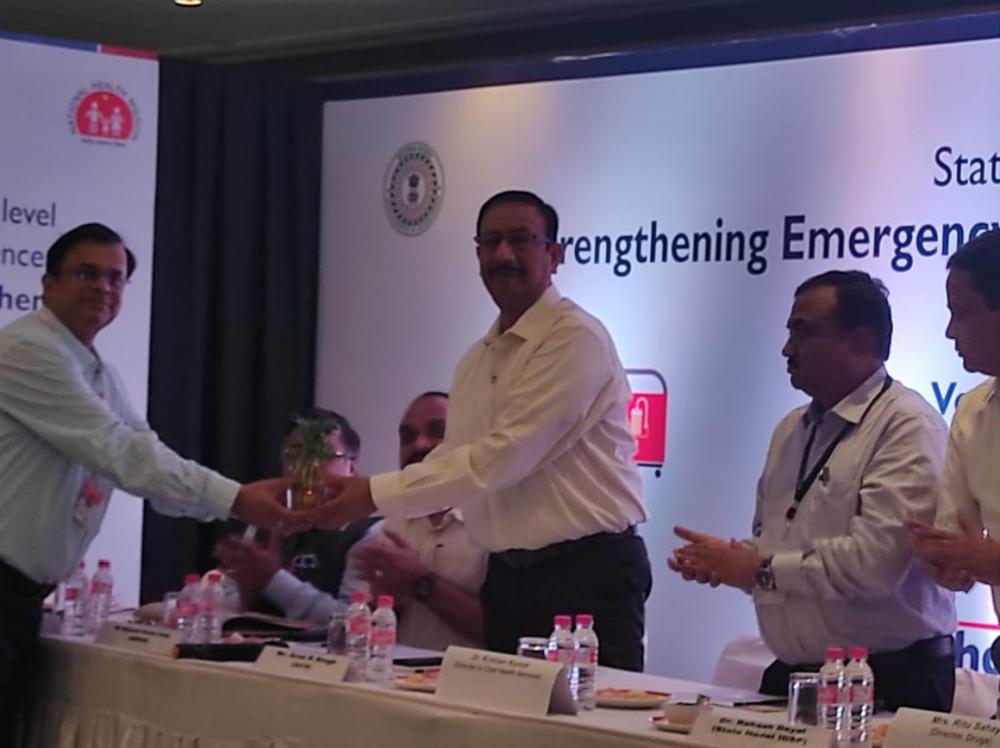

Emergency care can be defined as the provision of time-sensitive interventions needed to avert death and disability and for which delays of hours can worsen prognosis.
Emergency care includes two major components: medical decision-making, and the actions necessary to prevent needless death or disability because of time-critical health problems, irrespective of the patient’s age, gender, location, or condition.
In the past two years during the pandemic, the healthcare system was overburdened to tackle the increasing case of COVID-19, compromising other healthcare services to some extent. Currently, after the 2nd and 3rd waves, India’s entire health care delivery system is still recovering.
A recent comprehensive assessment study of emergency and trauma care facilities conducted in India showed that annually 9 -13% of all patients presenting to a health facility and 19-24% of admissions in Govt Hospitals and 31-39% of admissions in Private Hospitals are emergent and injured cases.Out of the 100 healthcare facilities assessed, 91% of hospitals had in-house ambulances, but only 34% of them had trained paramedics needed to assist ambulance service.
“With over 150,000 road traffic deaths, 98.5% of "ambulance runs" transporting dead bodies, 90% of ambulances without equipment/oxygen, 95% of ambulances with untrained personnel, most ED doctors with no formal training in EMS, misuse of government ambulances, and 30% mortality due to delay in emergency care, India resembles the United States of the 1960s.”
In 2018 itself, Road accidents have accounted for around 3500 lives across the Indian state of Jharkhand.
Early detection of acute illnesses, prompt access to needed care and an organized emergency care system can help save several lives.
Considering the above, this conference aims to draw light on the prevailing status of emergency and trauma care in government and private/charitable hospital settings of Jharkhand to discuss the existing gaps, have plenary sessions from expert speakers, panel discussions and come up with key recommendations to help strengthen emergency respiratory care services and management.
Purpose of the conference:
Aim
• Strengthening the emergency care services in the health delivery system.
• Prompt Cardiorespiratory care in emergency.
• Preparedness of Ambulance Care in Emergency & Trauma Care.
In this one-day Conference, in-house and outsourced panelists will be taking sessions.
Keynote address, panel discussion & Plenary sessions.
Topics for the sessions
• Measures to improve the emergency & trauma care services in RIMS
• Gold standards for emergency & trauma care services in Govt & Private Hospitals
• Essentials of Cardiorespiratory care expected in emergency services
• Preparedness of Ambulance Care in
80 Participants Specialist Doctors & Nurses from the public health facilities in districts cater to the accident-prone zone which has a high caseload. CSR organizations, Private facilities, Development Partners, State and District level Officials involved in emergency & trauma care management will be attending the conference.
PATH as a development partner is providing technical support to the state in respiratory care management oxygen ecosystem management strengthening and capacity building of facilities for better preparedness. PATH under USAID NISHTHA has conducted a one-day State Level Conference Strengthening Emergency & Trauma Care Services & Management on 8th September 2022 at Hotel BNR Chanakya.
PATH launched Jharkhand oxygen management guidebook was launched by Additional Chief Secretary, Health-in presence AMD, Director health services,State Nodal-IDSP, Director Drugs and other delegates in the conference. PATH also launched SOURCE project supported by BMGF.
Strengthening Oxygen Utilization and Respiratory Care Ecosystems (SOURCE) project is an initiative led by PATH to improve equitable access to high-quality respiratory care services at all levels of the health care system and ultimately, reduce maternal, child, and overall mortality from hypoxemia-related causes.
Working closely with global and country stakeholders, the initiative supports governments and partners in focus geographies to push forward efforts to reinforce oxygen and respiratory care systems as necessary components of national health care systems, pandemic preparedness, and global health.
The SOURCE partnership aims to develop and execute a set of operational, advocacy, and research activities toward increased oxygen financing, effective planning to manage oxygen systems, efficient oxygen procurement and distribution, improved clinical administration, and better data and monitoring.
In the conference eminent speakers Dr Pradeep Bhattacharya, HOD RIMS, Dr Sanjay Kumar, AIMS Deoghar Dr Tapas Sahu, Medanta,Dr Vijay Mishra, Medica hospital were speakers in this conference.